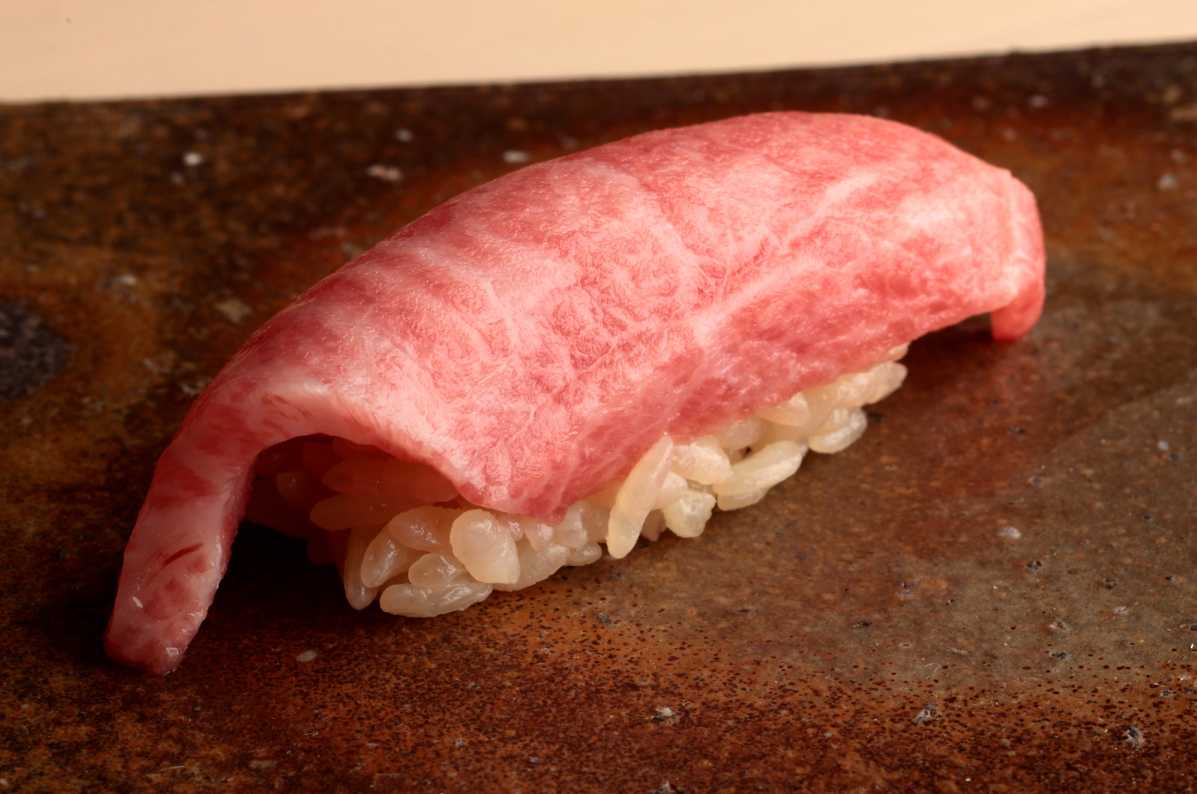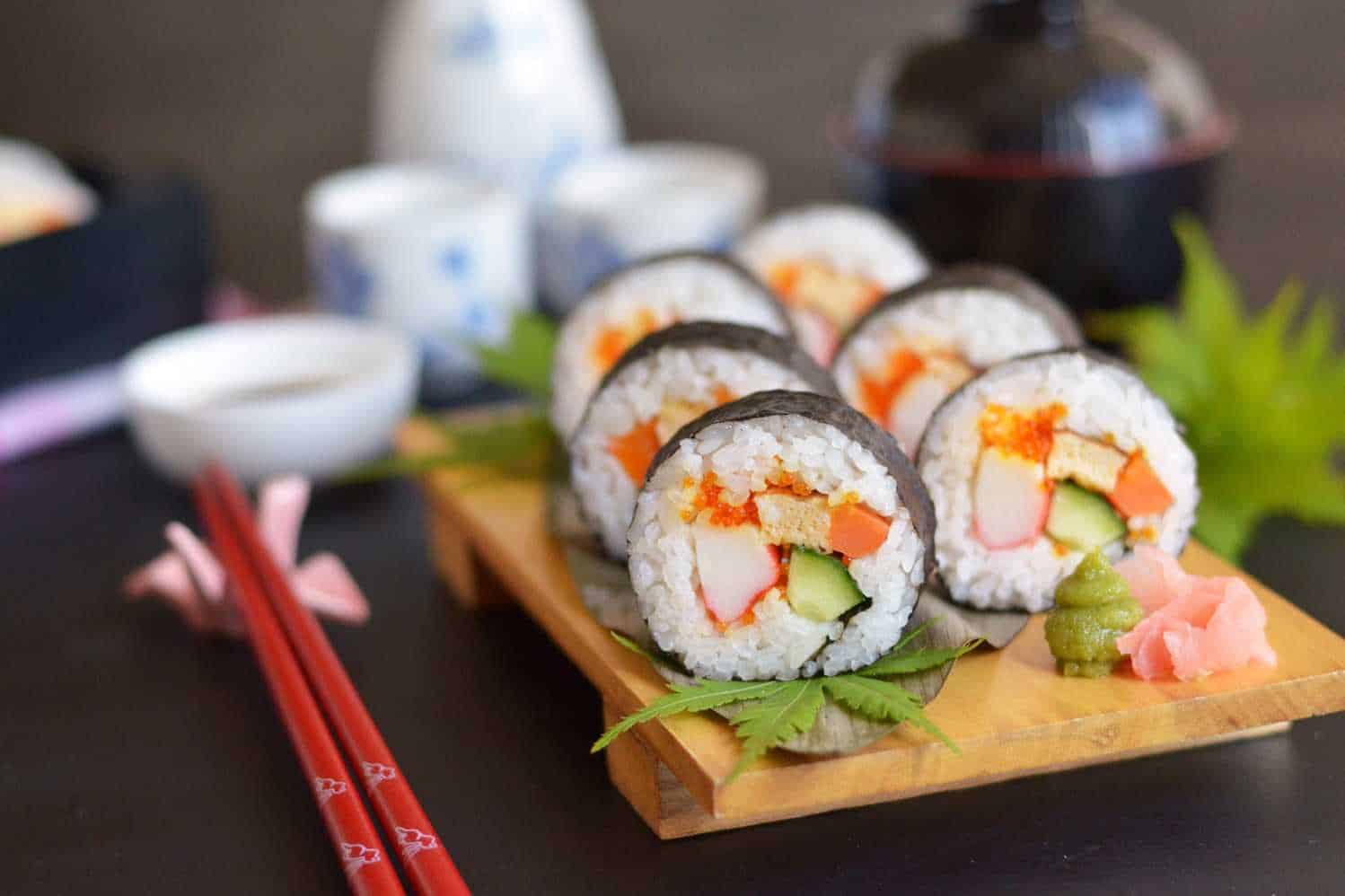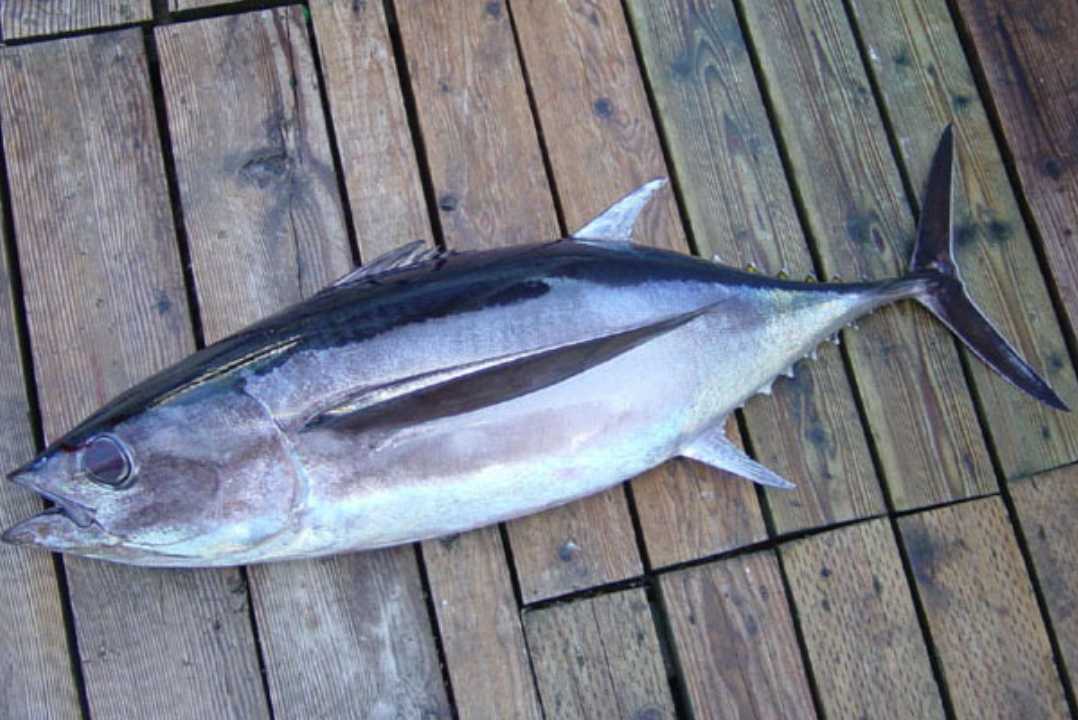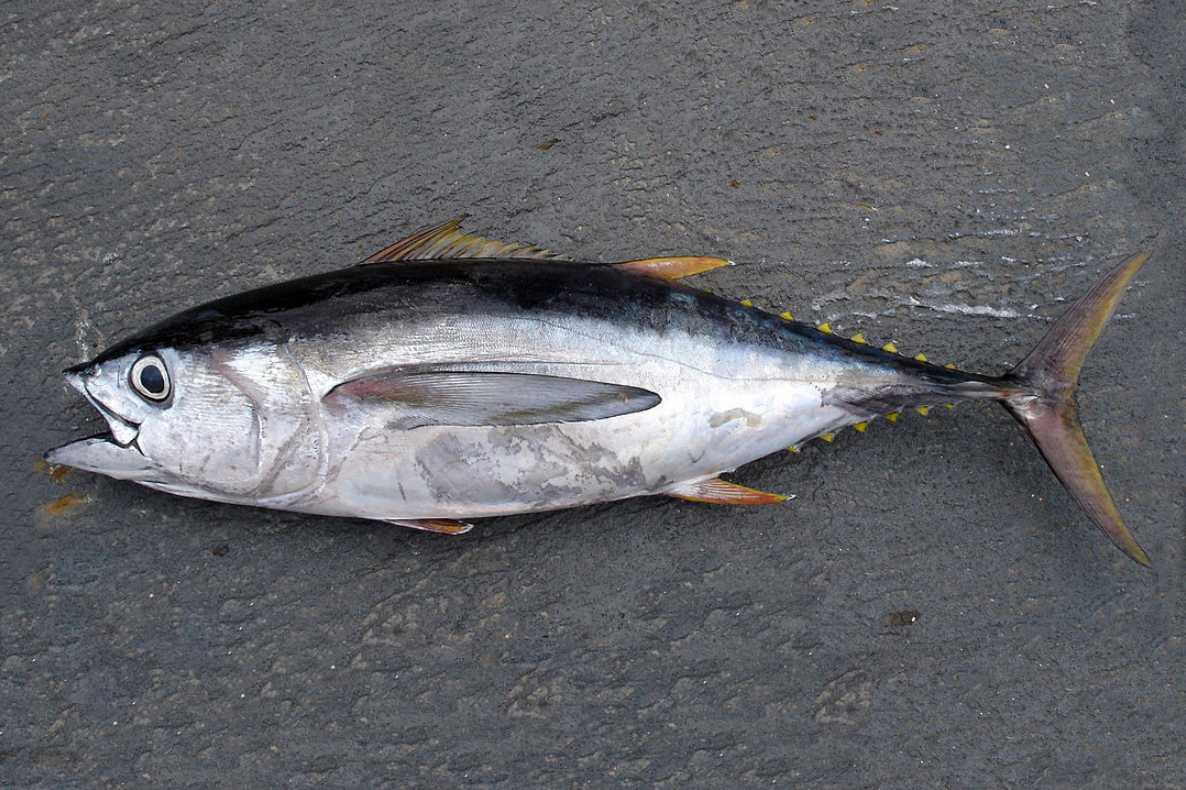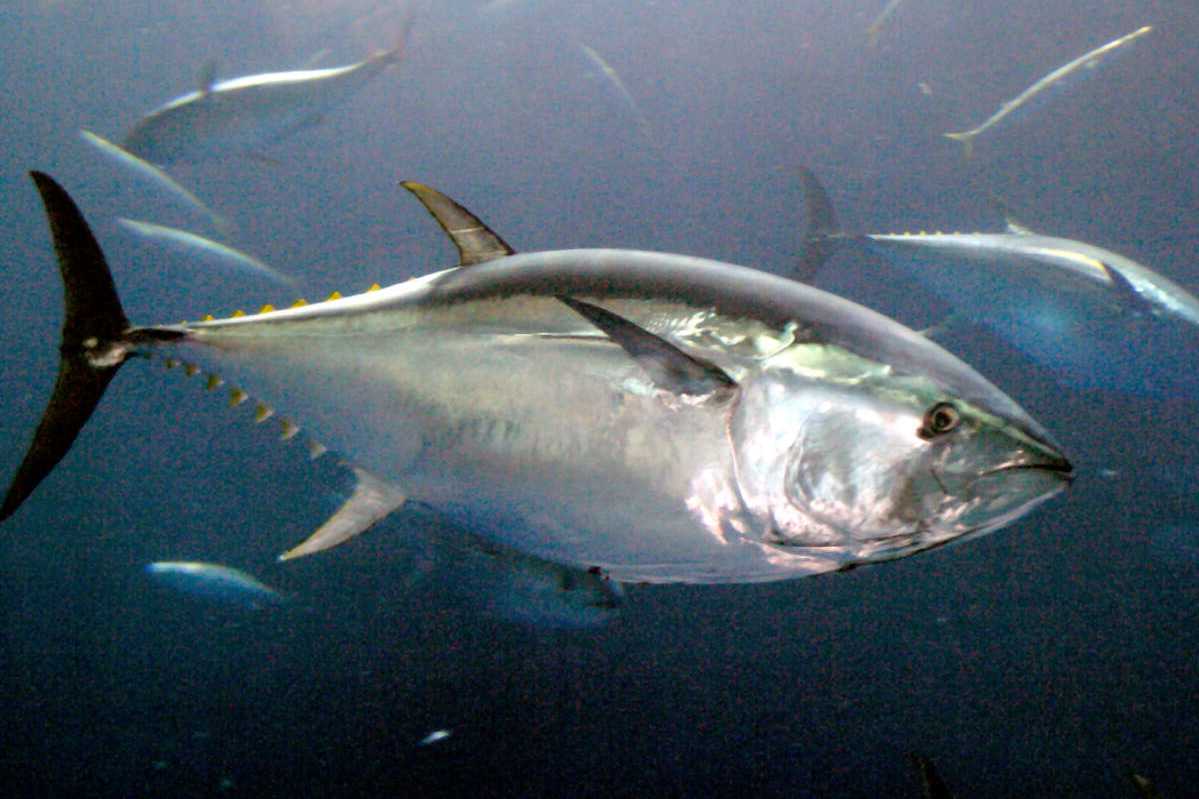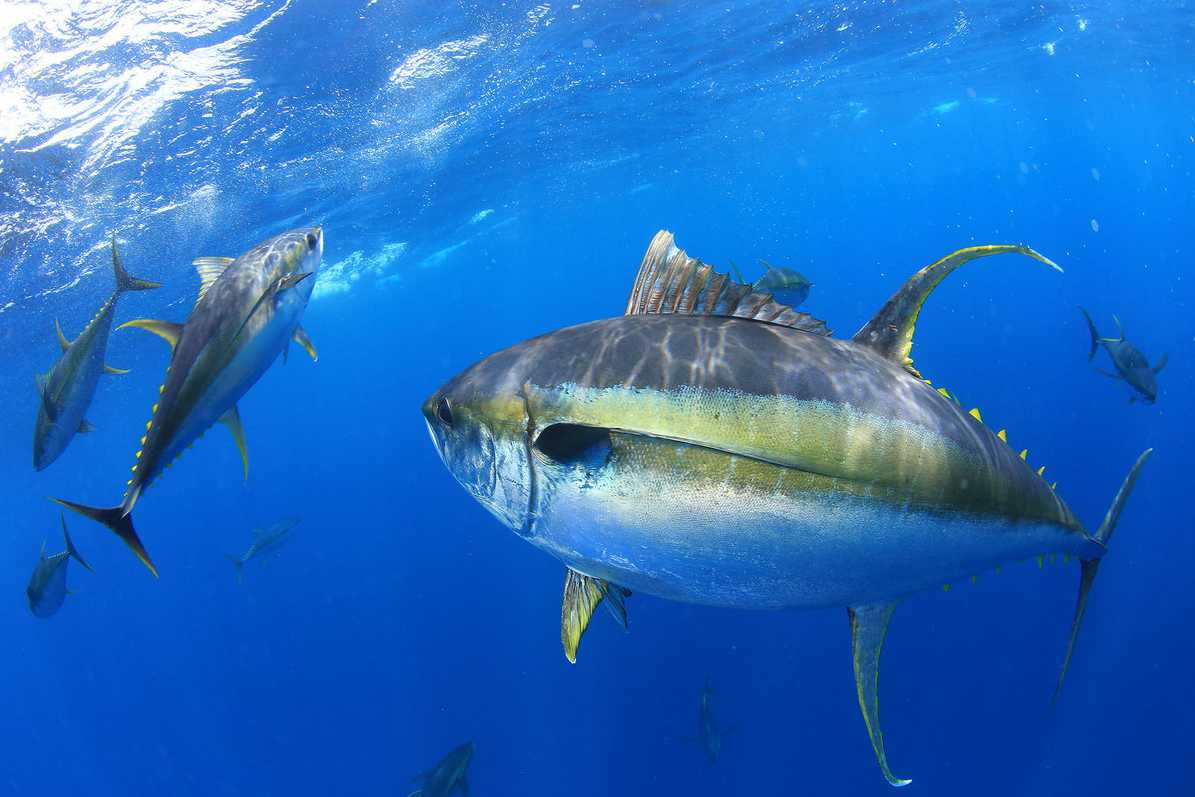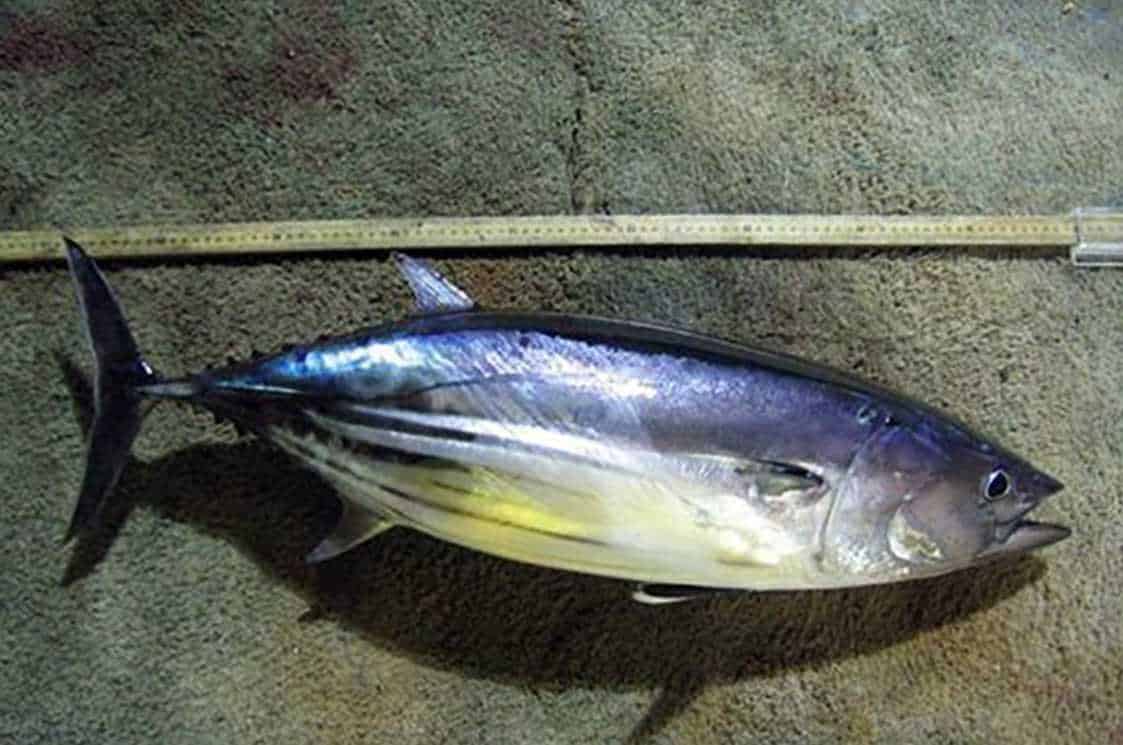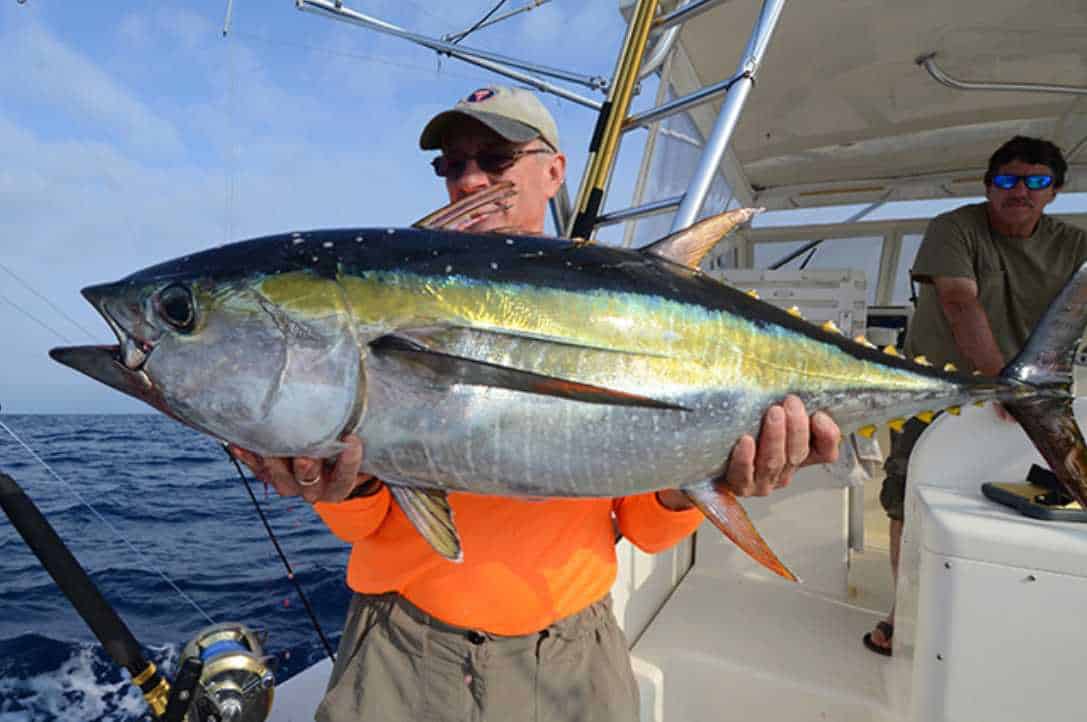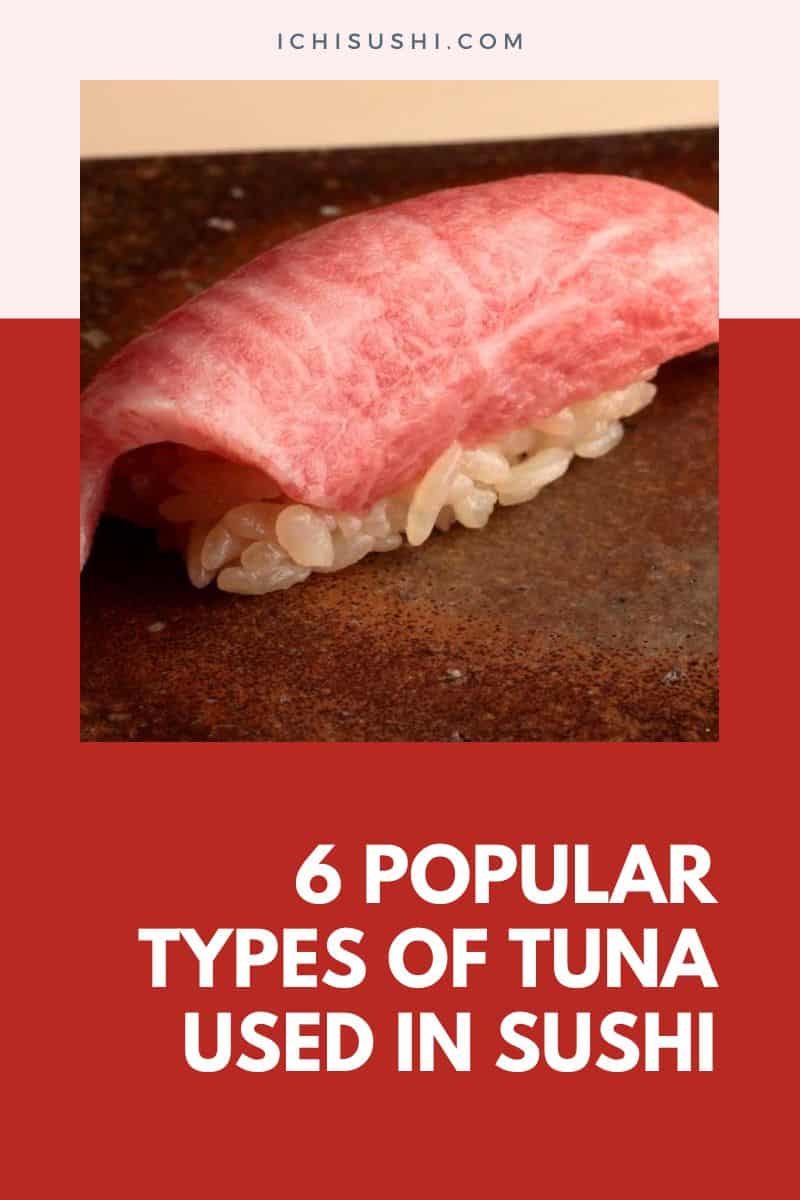Asian dishes are delicious and unique from one another. Among its neighboring countries, Japan is famous for having dishes that are served raw such as sashimi and sushi.
Some people automatically crave and drool whenever they hear the word sushi or see a picture of sushi. But, have you ever wondered what type of tuna is used in sushi? Read through the article below to find out.
What is sushi?
Whenever you hear the word sushi, you will think of Japan. It is one of the well-loved Japanese dishes. Its staple ingredient is sticky rice, which has a sour flavor due to it being soaked or fermented with vinegar. Thus the term sushi literally means sour.
Typically, sushi is combined with different foods ranging from eggs, vegetables, raw fish, and seafood. It is usually served cold and best paired with either soy sauce with calamansi, soy sauce alone, wasabi for additional spice, or pickled ginger.
Sushi is not just famous in Japan and its neighboring countries because it has also reached the taste buds of Westerners. Though it may look like it is pretty simple and easy to make, in reality, Japanese chefs have to undergo training for years to learn how to prepare and cook the rice used to make sushi properly.
Before it became popular, you could only see and order sushi from Japanese restaurants. Still, sushi is already available at any local grocery store or convenience store and can even be homemade at this age and time.
Since the creation of sushi has expanded depending on whoever made it, there are two famous sushi styles available in the market: the Authentic Japanese Sushi style and the Western Sushi style.
Take a look at the table below to know more about their characteristics:
| Type of Sushi | Ingredients Characteristics | Style | Eating Etiquette |
| Authentic Japanese Sushi | ● It is ideally low both in fat and calories.
● Has fewer ingredients, usually, a maximum of 4 ingredients all of which are rich in vitamins and minerals ● Uses sushi rice |
● The rice is wrapped around the nori seaweed sheet. Thus, the rice can be seen inside the nori.
● Consistent in style, old-school |
● Wasabi serves as the final touch and is often placed as a topping
● Pickled ginger, and soy sauce is the only sidings considered. ● Proper eating etiquette for Asian households like Japanese matters like, hands are used for nigiri while chopsticks are used for sashimi. |
| Western Sushi | ● Typically larger in servings
● Have a lot of ingredients. More than 4 ingredients and some are rich in fat and calories. ● Replaces the sushi rice or white rice with quinoa or brown rice instead ● Extreme flavor and high contrast in colors |
● Complete opposite of the traditional. It is the rice that surrounds the nori seaweed sheet. Thus, the rice can be seen outside the sushi roll.
● Progressive in style and more creative |
● Soy sauce and wasabi are already mixed together with the ingredients.
● No strict rules for eating sushi |
What is tuna?
Tunas have an elongated body that is sturdy, streamlined, healthy, and quite large. The size, shape, and color, whether flesh or skin, varies depending on the tuna species. The colors of the tuna are usually dark on its top and quite silvery on its bottom, with a shimmering shine.
They are a great source of fish meat regardless if it is for household meals, restaurants, or manufacturing. Tunas also belong to the Scombridae. Thus, they are highly related to mackerels. They are a staple ingredient for most Japanese dishes.
6 Types of Tuna that are Used in Making Sushi
There is a wide variety of tuna used to make sushi, all of which have a unique taste of their own. Sushi is a staple food for most Japanese and even its neighboring countries, and the Western countries that have tried the savoriness of sushi can attest to it.
There are actually 6 types of tuna that are highly recommended to be used in making sushi, all of which vary in taste, appearance, production areas, and the dish specialty they are used for.
Albacore Tuna
In Japanese, Albacore tuna, or Shiro Maguro, is also known as Binnaga. It is one of the highly recommended tuna used in making sushi. Among the many tuna species, it belongs to the list of the smaller species of tuna that only grows with a maximum of 1 meter in its length.
Moreover, Albacore tuna is shaped like a bullet with a dark blue tone on its back while a lighter blue-gray tone on its belly and sides. Its flesh is pale pink and is regarded as high-grade sushi that is also often utilized to manufacture canned tunas.
Shiro Maguro is a famous white tuna and is highly requested in the United States compared to Japan. Thus, it is often used to make sushi toppings in Western countries, and it is considered the chicken of the sea due to its high quantity.
Bigeye Tuna
The Bigeye tuna is also known to be the Mebachi. It is one of the many tuna species that also thrive in temperate areas in the ocean. You can easily distinguish the Bigeye Tuna due to its head and eye features that are entirely out of proportion compared to its entire body shape and size.
Compared to the Albacore tuna, its flesh is in a vibrant red tone. Even though it has a high-fat content, it is still tasty. The average weight and size of the bigeye tuna are around 100 kilograms heavy and up to 1 meter long. Though, it is rare that fisherfolks catch a bigeye tuna that weighs about 200 kilograms.
Bluefin Tuna
Bluefin tuna also belongs to the list of common tuna species used in making sushi. There are two kinds of Bluefin Tuna – the Pacific Bluefin Tuna and the Southern Bluefin Tuna.
In Japan, the Pacific Bluefin tuna is called Kuro Maguro, and on the other hand, the Southern Bluefin Tuna is called Minami Maguro. These Bluefin Tunas are called Honmaguro by the Japanese fisherfolks. It also means top-class tuna.
Learn more about the characteristics of the two bluefin tunas through the table below:
| Pacific Bluefin Tuna | Southern Bluefin Tuna |
| Mostly seen and caught in the Atlantic Ocean and the Mediterranean Sea | Mostly seen and caught in the Indian Ocean |
| Has a higher sushi grade when frozen compared to its raw form | Best alternative for Pacific Bluefin Tuna |
| Do not have many fatty parts | Has a lot of fatty parts |
| Quite expensive | Only comes after the Pacific Bluefin Tune when it comes to cost |
The Bluefin Tuna is a highly requested tuna used in making sushi because of its taste. Most expensive sushi restaurants offer this tuna because it is deemed the most flavorful tuna because of its perfectly balanced nutrients- protein and fats.
Longtail Tuna
In Japan, the Longtail tuna is called Koshinaga. As the name implies, it has a longtail but relatively slender body. Fisherfolks do not have difficulty identifying this tuna due to its exceptional yet noticeable white spots on its tummy. It also has red flesh that is both delicious and refreshing to whoever eats it.
Despite the term longtail, it is considered to be the smallest among all the tuna species as it can only grow up to 500 millimeters and up to 1000 millimeters occasionally.
Skipjack Tuna
Skipjack tuna is called Katsuo Maguro in Japan or Aku in Hawaii. This type of tuna is quite identical to the size and shape of a mackerel. Moreover, it has bloody juices and tastes fishy. Thus, it has to be seasoned or cured before eating.
Katsuo is one of the highly requested tuna used in making sushi in Japan. However, despite its popularity in the land of sushis, it is still challenging to find and catch this type of tuna outside the land and waters of Japan.
Moreover, its flesh spoils as soon as it is dead. Thus, the possibility of exporting this tuna to other places is quite challenging.
Yellowfin Tuna
Kihada is the term called for Yellowfin Tuna in Japan. Young yellowfin tuna is unrecognizable at birth, but as they grow older, you may notice some changes in their physical appearance, such as the gradual increase in length of their back and anal fin. Moreover, as the name implies, it also turns into a bright yellowfin.
Yellowfin tuna used to be the primary source of canned tuna production and manufacturing, not until the restriction was ordered. Thus, it eventually became a key ingredient in making any Japanese dishes such as sushi and sashimi. Due to its delicious taste and bright red fresh meat has become the crowd’s favorite seafood.
What does sushi-grade tuna mean?
The term “sushi-grade tuna” is given to any specie of tuna that has undergone a process to check if it is safe for people to eat it in its raw form. The process does not take much longer because once the tuna has been caught, bled, and gutted, the fishermen have to put it in a bucket of ice to freeze it thoroughly.
There are some fish that are known to be parasitic, one of which is the salmon fish, which can cause severe illnesses to humans once ingested.
Thus, it is essential that most tunas have to be frozen at around 0 degrees Fahrenheit for at least 7 days or at a -35 degrees Fahrenheit for about 15 hours to kill any parasites living in the fish thoroughly.
The freezing process and parasite killing make the fish safe and ready for consumption. The freezing method allows the fish to stay fresh as long as it is done accordingly.
Sushi-grade is the label that fishermen and fish stores often use to emphasize that the quality of the fish is at its peak and that it is excellent and safe for raw consumption.
3 Tips on How to Spot a Sushi-Grade Tuna
Sometimes, it takes a lot of good eyes to spot if fish meat will pass as sushi-grade. Though, if you do not know yet how to look for one, here are some times for you to live by the next time you go to the wet market and purchase fish meat that you can serve and eat as sushi.
- Ensure that you go to a reputable wet market or fish meat shop. Ask around your friends who often go to a wet market if they have a recommended store. Check if the shop of the fish you are about to purchase has a good track record, has a knowledgable staff regarding the fish meat they sell, has a regular shipment, and sells all the products instead of having it on the stock as it will soon spoil.
- Since you pay with your hard-earned money for the fish you are going to purchase, make sure that you ask the correct queries to the seller. It is your right to be well-informed about the fish you are buying. You may ask common questions about where the fish came from, how the fisherfolks handled the fish, and how long it has been since they got it. Though, if you will purchase a tuna that has been processed already, you can ask the seller if the equipment they used has been sanitized. This is necessary for you to make sure that no cross-contamination has occurred.
- Knowing whether a fish is spoiled or fresh is a life skill. You can use both your sense of touch and sense of smell if the quality of the fish is still at its peak. It is easy because if a fish still smells the same as the ocean, it is still fresh. Moreover, it should feel flaky or soft when you touch it and, at the same time, must have a vibrant tone.
Health Benefits of Sushi
There are a lot of health benefits when you eat sushi. Most tuna species have two predominant and good omega 3 fatty acids: that help you maintain good health for your heart. These omega 3 fatty acids are the Omega -3 EPA and the Omega-3 DHA.
Cholesterols from the tuna work well by decreasing the triglycerides amount in your blood. Thus, preventing any potential risk of emerging any irregular heartbeat or may lessen a plaque buildup in one’s arteries.
Eating sushi can contribute another health benefit that helps you protect your entire body from any oxidative damage. Moreover, it gives you your daily dose of selenium which is the nutrient that is essential in taking care of both your thyroid and reproductive health.
Summary
Now that you know what type of tuna is used in sushi, you can decide whether you want to try to learn how to make one or become a sushi expert and try out different sushi offered from various restaurants and give some reviews. It is nice to know more about the food you love, and you will appreciate its taste better.

Hiroshi Nakamura, a Tokyo-born sushi chef turned US-based writer and critic, is the voice behind ichisushi.com, blending traditional sushi wisdom with modern insights.
